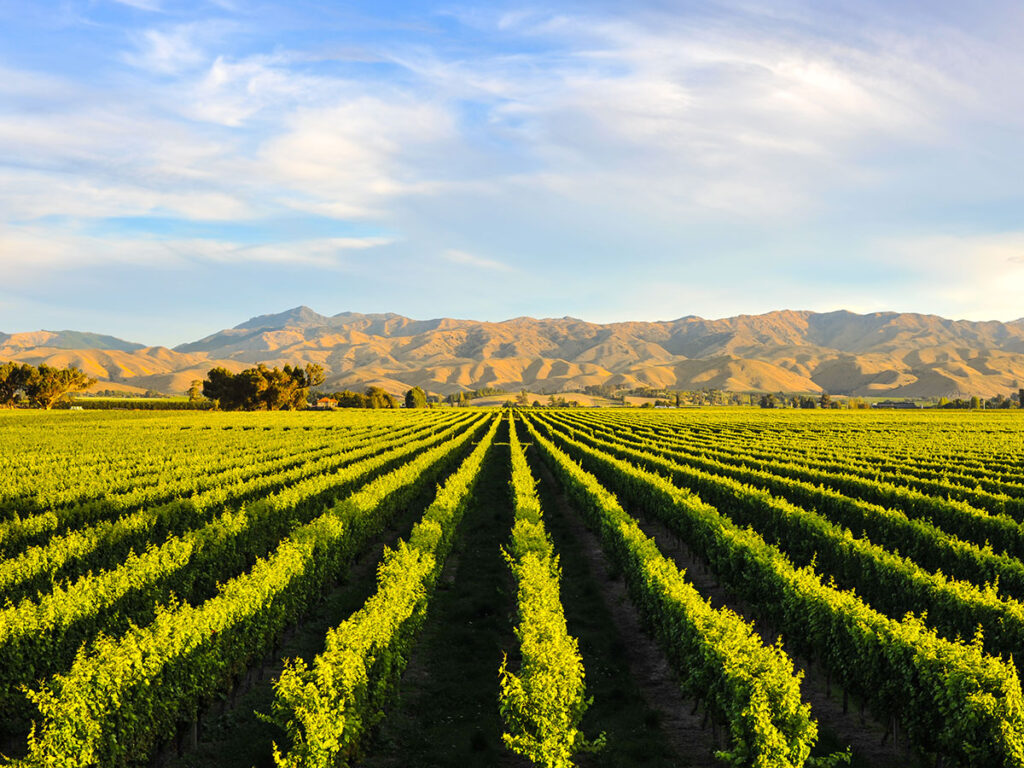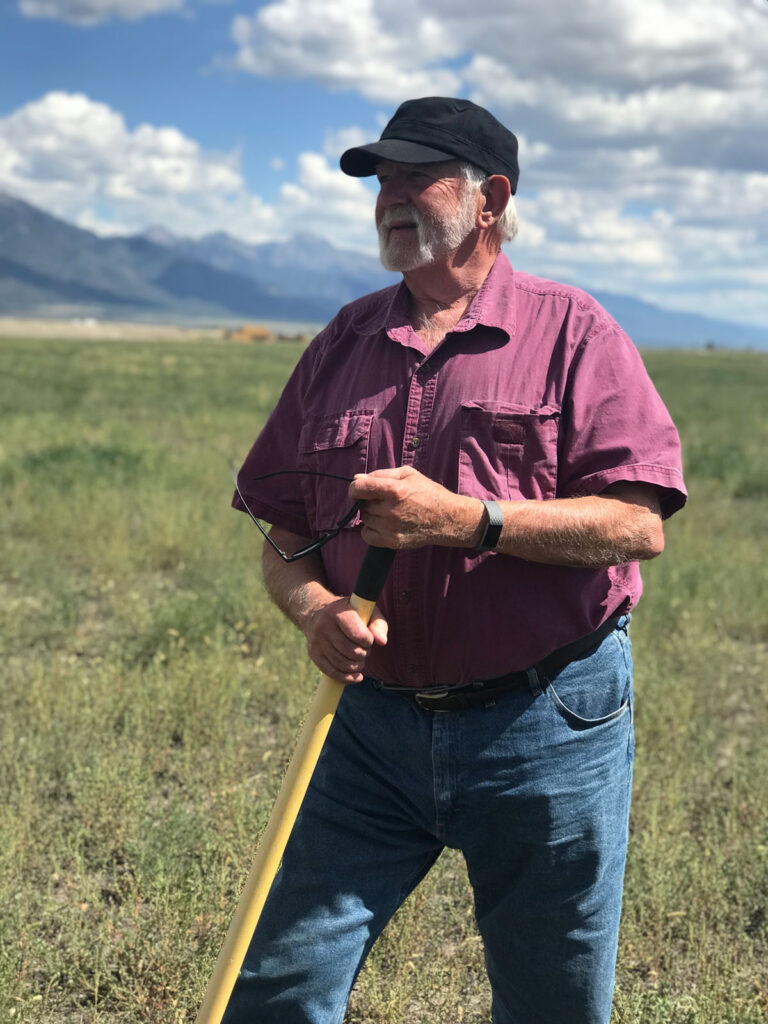
Driving across the dry flat plains of southern Arizona’s San Simon Valley earlier this year, I was reminded how treacherous it can be to ignore the “Earth Fissures Possible” highway signs dotting the valley. Deep trenches patched in fresh asphalt cut across the roads there, and if you’re not on guard you’ll find yourself doing an impromptu shock-check. I knew these trenches had something to do with water pumping, but I had never really bothered to dive deeper, so to speak.
A few weeks later, combing the science archives for a homeschool project, my son unearthed a 1917 U.S. Geological Survey report by a distant relative, A.T. Schwennesen. In a stroke of serendipity, it contained a carefully produced hydrological map of the San Simon Valley, south of where our family now ranches in eastern Arizona. The report described a region of “flowing wells,” or artesian springs, and “areas in which depth to [the] water table… is less than 100 feet.” This same valley, now prime real estate for commercial pecan and pistachio farms irrigated by pumping groundwater, is a perfect microcosm of the groundwater depletion story across the American West.
Since 1940, the average decline in index wells in this region has been over 60 feet, according to the Arizona Department of Water Resources, with some measuring as much as a 272-foot drop in water level. As a result, the ground in parts of the valley has sunk by as much as an inch a year these past decades. Some areas are now many feet lower than when my great-great-uncle trekked across them a century ago.
The widespread perception that we face a looming water shortage is not, in other words, just another trumped-up environmental catastrophe. Today’s water shortages are a complicated issue, to be sure, but the basic outlines are clear enough: Western water is a finite resource with considerably more demand than supply. The most immediate and obvious response is for people to fight over a dwindling resource. The “water wars,” as they’ve come to be known, often seem destined for a winner-take-all negotiated truce with clear victors lording it over the vanquished.
But there may be another way—a cooperative pathway defined by voluntary exchanges. For decades, PERC has highlighted the extraordinary degree to which free market transactions operating on cooperative principles can generate environmental surpluses rather than merely more fights over relatively scarce resources. A newly emergent example of this model in action is a concept known as a “groundwater conservation easement,” which facilitates voluntary, market-based water conservation.

A Novel Tool
Groundwater conservation easements are a novel approach to market-oriented resource allocation. In a nutshell, the tool is a legal contracting mechanism whereby groundwater users overlying an aquifer not only place their land under a conservation easement but also agree to voluntarily limit groundwater pumping, in exchange for compensation. This allows owners of groundwater to contract with buyers who wish to keep a portion of that water under permanent “non-use” in the aquifer. By reframing the structures of water allocation along transactional lines, voluntary water conservation efforts like these may do far more water conservation with far less teeth-gnashing than approaches that rely on regulation or mandates.
The nation’s first groundwater conservation easement, placed on an 1,800-acre farm in Colorado’s San Luis Valley in 2022, demonstrates the prospects of this novel scheme. According to Colorado Public Radio, farmers and ranchers in the valley either had to figure out a way to “drastically cut how much water they pump out of the ground” or face the prospect of hundreds of wells being cut off by the state, a move that would have devastated the agriculture-based local economy.
The farm’s easement, agreed between owner Ron Bowman and the nonprofit land trust Colorado Open Lands, will retire pumping on seven of the farm’s 12 wells over the next decade and reduce pumping on the remaining five wells by half. The resulting water savings will allow the surrounding subdistrict to meet its groundwater sustainability goals, enabling other farmers in the area to continue operating without reducing their own water use. “If by discontinuing irrigation on my farm,” Bowman said, “it means that my neighbors may be able to keep their multigenerational farms in their families, then it feels like the right thing to do.”
By reframing the structures of water allocation along transactional lines, voluntary water conservation efforts may do far more water conservation with far less teeth-gnashing than approaches that rely on regulation or mandates.
The primary advantage of groundwater easements is that they effectively turn a mere “right” into actual property—at least in instances where a willing seller and buyer have the same aim of curtailing pumping. If you have exclusive rights to use a car, for instance, but are expressly forbidden from ever selling it to a willing buyer, it is not really your property in the first place. Water rights have traditionally been something like this—effectively and carefully defined for generations in western law, yet never really raised to the level of a true property right. Part of the difficulty is that water is, by definition, hard to pin down. Yet strangely, property in water suffers less from water’s slippery nature than by a lack of transferability of water rights.
True property must be definable, defensible, and transferable. Groundwater conservation easements represent a contractual innovation that adds the crucial third element of transferability in a specific context: where a water user wants to effectively transfer their property right to, say, a conservation organization or land trust who agrees not to pump groundwater, instead leaving it in the aquifer. This shift has enormous implications on incentives: If you are empowered to sell the car you once had free access to, do you think you are more motivated or less to invest in its care?
A number of legal and policy considerations must be addressed before groundwater easements can be more widely implemented. First, enabling statutes must exist to allow conservation easements to include water as well as land as a conservable resource. Second, the pumpable basin must be monitored, managed, and reasonably finite, or individual reductions in pumping will be simply erased by additional pumping from other users. Third, water users must be protected from “abandonment” provisions wherein they forego their water right if unused for traditionally beneficial uses.
One of the prime ingredients in a functioning marketplace is a clear understanding of property—knowing whose is whose. Groundwater easements’ nudging of water into the realm of property opens a universe of potential transactions. Many landowners like myself are keenly attuned to their water rights, but since we are generally legally prevented from engaging in any meaningful transfer of those rights, it makes no sense whatsoever to conserve (let alone monitor) the use of that right. You’d be a fool not to pump and use as much water as you can if it is only “worth” something if pumped onto a crop. Water understood as property traded in a marketplace, however, changes all of that. Then, it suddenly makes sense to measure and conserve a resource that is your property, rather than merely a resource that flows through your property.

“If by discontinuing irrigation on my farm, it means that my neighbors may be able to keep their multigenerational farms in their families,” says the farmer Rob Bowman (left), “then it feels like the right thing to do.”
Voluntary Solutions
Some farmers remain skeptical, however—and understandably so. This skepticism reflects a growing consensus amongst agricultural producers that the very foundations of food production (not to mention their way of life) are under threat. Moreover, groundwater easements rely on payments for non-productive use of water, payments which must either come from conservation-minded donors or the larger taxpaying public.
In the end, however, despite these legitimate concerns, voluntary efforts to work out local solutions are vastly superior to bureaucratic dictates from afar. In light of increasingly pressing water shortages, groundwater conservation easements may become an important counterexample to heavy-handed dictates that reward litigation over cooperation.
In light of increasingly pressing water shortages, groundwater conservation easements may become an important counterexample to heavy-handed dictates that reward litigation over cooperation.
In this vein, it has become cliché to trot out Mark Twain’s adage that “whiskey’s for drinking, water is for fighting.” Despite the aptness of the observation, however, Twain apparently never said it. As a metaphor for the murkiness surrounding water issues, one could hardly do better. Not only is our understanding of western water problems hazy, even our historical quips about their complexity are muddied. Groundwater easements may offer glimmers of forthcoming clarity—with their reliance on markets and price signaling, groundwater conservation easements may well be the breakthrough needed to allow people to voluntarily and creatively allocate a scarce resource.
In 1917, A.T. Schwennesen wrote of the cienegas—marshlands—and flowing wells in the San Simon Valley. He wrote of a stream, now long gone, that was fed by “wastewater” from the artesian springs. Today, in an age of water scarcity, it is difficult to imagine such “waste” ever returning. Perhaps though, by channeling the power of markets and tapping human ingenuity, we will see water abundance replace water scarcity as the driving metaphor of change. Maybe even, in a burst of true optimism, we can all just get back to drinking whiskey.




